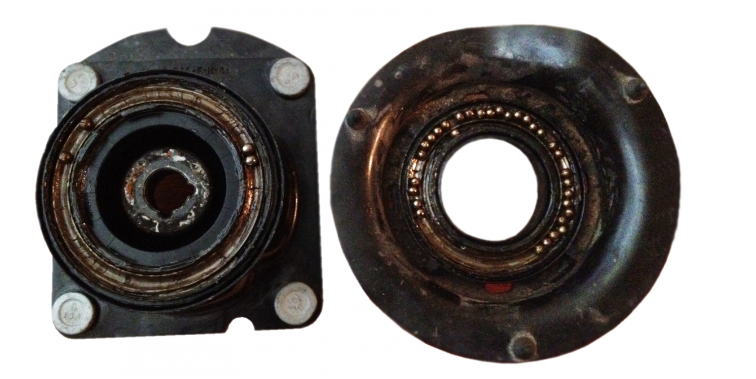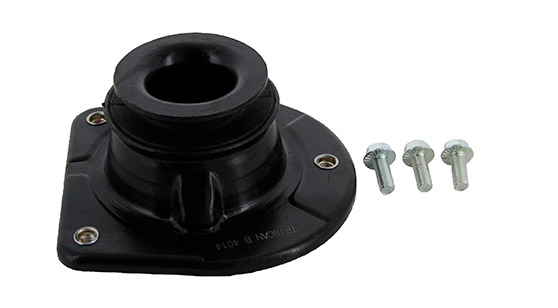Industry News
Can a defective strut mount bearing be dangerous?
Defective strut mount bearings affect the driving behavior of a car in several ways. Depending on how badly the strut mount bearing is damaged, one experiences:
• Extended breaking distances
• Reduced driving and steering capabilities
• Tracking problems
• That the tires wear differently on the sides
• Increased wear of shock absorbers

Examples of defective strut mount bearings
For these reasons, there is no doubt that it is dangerous to drive in a car with defective strut mount bearings. In addition to the safety aspect, there is an economic incentive to replace defective strut mount bearings. Over time, they will cause consequential damage to other parts of the suspension - and thus additional and unnecessary repair costs for the car owner.
The strut mount bearing is an important part of the suspension and connects the strut with the body. The bearings on the front axle allow the strut to turn in the strut tower during steering movements, thus ensuring smooth and precise steering. In addition, the strut can change its angle to the body within the strut tower to a certain extent thanks to the strut mount bearing. The damping effect of the bearing also ensures that noise and vibrations of the suspension are not transmitted to the body.
Strut mount bearings are designed to last the lifetime of the vehicle. However, wear, high load or external influences such as frost, salt, humidity and temperature fluctuations can lead to a shortened lifespan.
How to recognize a defective strut mount bearing:
If you want to detect a defective strut mount bearing, there are several signs that you should keep in mind:
• A loud bang when driving over a pothole or a moderate bang when driving over bumps on the road may indicate a defective strut mount bearing.
• The steering is heavier, works sometimes even jerky; it has more play than usual or reacts with a delay on steering movements.
• Turn the steering wheel slightly in both directions with the engine started and the handbrake engaged. Outside the car, a person listens carefully. If there is a slight squeaking or creaking, one or both bearings are likely to be defective.

Article source:triscan.com
